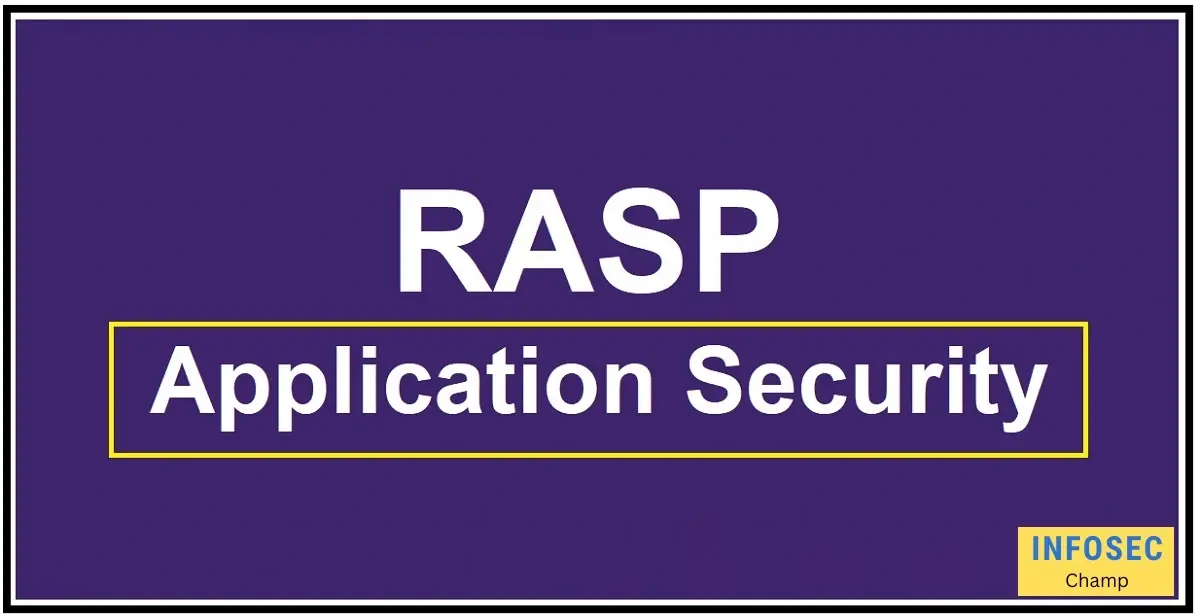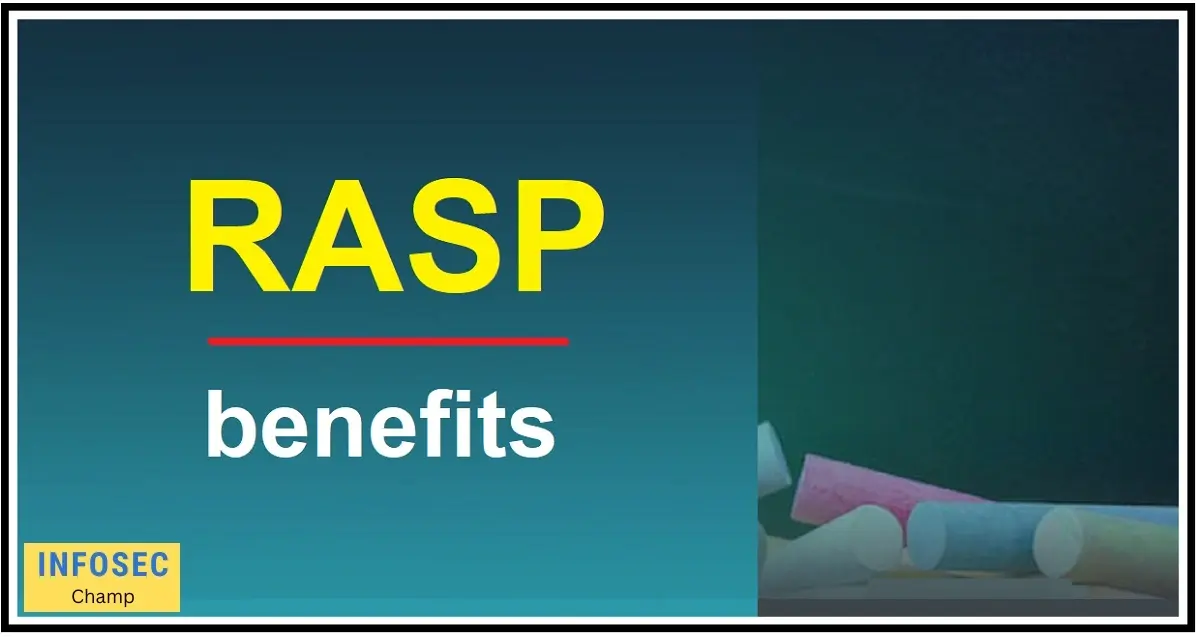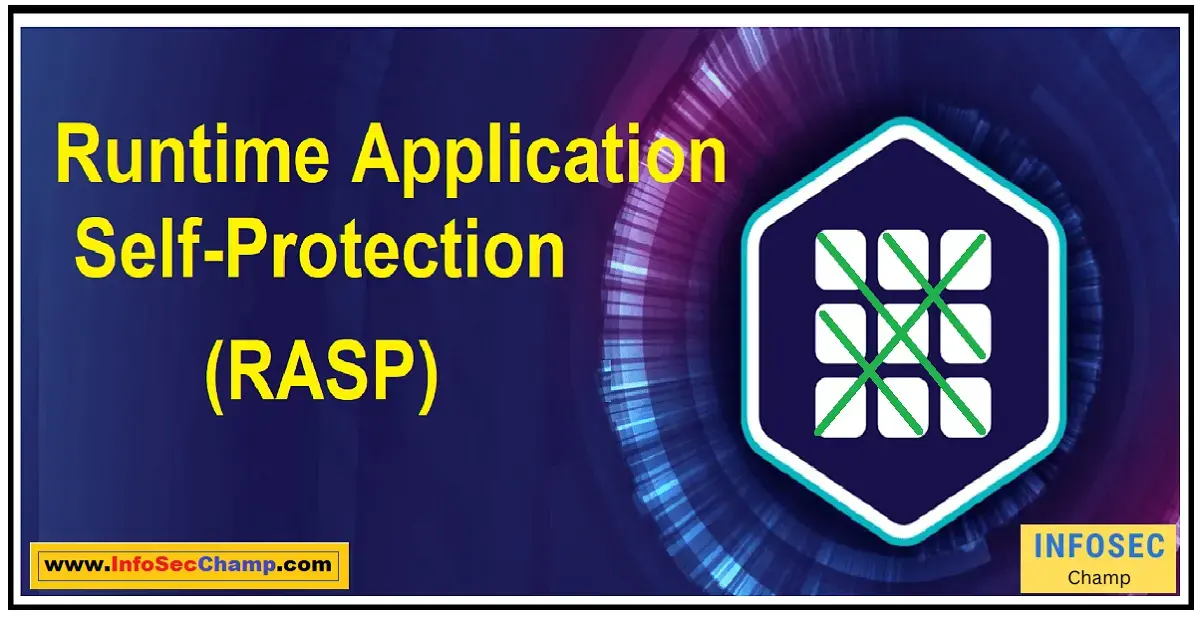Prevoty RASP is a particular use of RASP technology that offers high-tech security for web services and apps. Threats like SQL Injection, Cross-Site Scripting (XSS), and Remote Code Execution are protected against in real-time by Prevoty RASP. A fresh and cutting-edge method of web application security called Runtime Application Self-Protection (RASP) shields users in real-time against threats and intrusions. RASP works by directly integrating security controls into the programme, enabling it to continuously monitor and defend itself.
How then does RASP works?
RASP technology can keep track of all incoming requests and outgoing responses while an application is in use. RASP can take steps to stop an attack or notify the security team if a threat is identified. As it offers a complete solution for safeguarding web applications and services, this proactive approach to security is gaining popularity.
RASP technology can identify and defend against a variety of threats, such as:
- Attacks using SQL injection
- Site-to-site scripting (XSS)
- Execution of code remotely
- DDoS attacks at the application level
- Uploads of malicious files
- Sensitive data access without authorization
Prevoty RASP was created expressly to defend against these threats, and it makes use of a combination of machine learning and security knowledge to offer the most thorough defence. You may rest assured that Prevoty RASP will safeguard your web apps and services from the most recent security risks.
In summary, RASP technology is a fresh and ground-breaking method of online application security that offers real-time defence against threats and assaults. Advanced security for online services and applications is provided by Prevoty RASP, a particular RASP implementation. RASP is able to detect and defend against a wide range of threats by keeping track of all incoming requests and outgoing responses, offering a complete solution for web application security.
How does RASP differ from WAF? | RASP vs WAF
Effective security measures are more important than ever as web applications and services become more complex. The security technologies RASP (Runtime Application Self-Protection) and WAF (Web Application Firewall) are both often utilised. Although RASP and WAF both offer web application protection, it’s important to recognise their fundamental distinctions in order to select the best security solution for your company.
Network-based security software called WAF serves as a firewall between the internet and a web application. It keeps an eye on incoming traffic and stops harmful requests like remote code execution, XSS, and SQL injection threats. Incoming traffic is analysed by WAFs, who then compare it to a list of predetermined security rules. The WAF can block a request or notify the security team when a violation is found.
On the other hand, RASP is a web application-integrated security solution that is built on applications. It offers real-time monitoring and defence of the runtime environment for the application, spotting and thwarting threats before they can do damage. RASP analyses how an application behaves and how it interacts with the network, data, and underlying operating system. The RASP system can take action to stop an attack or notify the security team when a threat is identified.
The degree of visibility and control that each platform offers is the primary distinction between RASP and WAF. Because they can only monitor incoming traffic and cannot examine an application’s activity, WAFs have a limited ability to safeguard users. RASP, on the other hand, offers a more thorough approach to security because it is able to identify and stop attacks that are directed particularly at the application.
Another distinction is that attackers frequently find ways to get around WAFs by encoding or employing encryption. In contrast, RASP is more challenging to get around because it is embedded into the application and has access to the runtime environment.
The decision between RASP and WAF ultimately comes down to the unique security requirements of your firm. WAFs are a good way to stop frequent web application attacks, but they lack RASP visibility and control. RASP, on the other hand, offers a more thorough approach to security but may be more challenging to set up and maintain. Before choosing, take into account the particular requirements, finances, and resources of your firm.

Why should you consider using RASP for application security?
Due to its potential to improve application security, runtime application self-protection (RASP) technology has recently attracted a lot of interest. We will go through why RASP is crucial for enterprises trying to safeguard their web applications in this article.
The capability of RASP to offer apps real-time protection is one of its main advantages. RASP is integrated within the programme itself, unlike conventional security mechanisms like firewalls or intrusion detection systems. As a result, RASP can keep an eye on the application’s runtime environment and quickly identify malicious behaviour. The RASP system can intervene to halt an attack or notify the security team when a threat is identified, allowing for a more proactive approach to security.
RASP also aids in defending against attacks that are directly aimed at the application, which is another benefit. RASP can identify and respond to threats like SQL injection, cross-site scripting (XSS), and remote code execution by keeping an eye on the runtime environment. When compared to conventional security methods, which rely on generic signatures to detect threats, this offers a more thorough and efficient security strategy.
In addition to offering more insight into application activity, RASP also has security features. For businesses that must adhere to security and data protection laws like PCI DSS and GDPR, this can be very helpful. The risk of a data breach and the possible negative effects on an organization’s reputation is decreased when enterprises have real-time insight into application activities.
Finally, RASP technology is evolving and becoming more widely available, making it a competitive alternative for businesses of all sizes. Organizations may simply integrate RASP into their security architecture thanks to the variety of RASP tools that are currently available, giving their applications improved security and visibility.
In conclusion, RASP technology should be seriously considered by businesses wishing to improve their application security. RASP offers a strong and affordable solution for securing online applications with its real-time protection, thorough threat coverage, increased visibility, and simplicity of setup.
Where is Imperva RASP used?
Real-time protection for online applications and services is provided by Imperva RASP (Runtime Application Self-Protection), a security technology. Organizations and corporations utilise the technology to defend against a variety of security risks, such as SQL injection attacks, cross-site scripting (XSS), and remote code execution.
Imperva RASP can be deployed in a range of settings, including on-premise data centres, cloud-based infrastructure, and hybrid settings that combine the two. Additionally, businesses of all sorts, from tiny firms to major corporations, use the technology.
Imperva RASP is a cost-effective option for businesses wishing to strengthen their security posture because it can be quickly and simply incorporated into existing security infrastructure and systems. Additionally, because of the technology’s tremendous scalability, it can develop and adapt as the demands of the company change over time.
Organizations can swiftly spot and respond to threats thanks to Imperva RASP, which gives them real-time visibility into the security of their applications. The system also offers in-depth reports and alerts, which makes it simpler for security teams to comprehend the risks they are up against and take the necessary precautions to mitigate them.
The Imperva RASP security solution is adaptable and powerful, and it can be applied to a number of settings to defend against a variety of threats. For businesses trying to strengthen their security posture, the technology’s scalability, real-time visibility, and flexibility to interface with existing security systems make it an appealing choice.
What RASP tools are available?
By integrating security controls within the application itself, Runtime Application Self-Protection (RASP) technology offers real-time protection to online applications. This proactive approach to security aids in defending against a variety of dangers, such as remote code execution, XSS, and SQL injection assaults. Organizations can use a range of tools that are offered on the market to implement RASP.
- Prevoty: Prevoty is a well-known RASP utility that offers a defence against a variety of dangers, including XSS, SQL injection, and cross-site request forgery (CSRF). The tool operates by examining the actions taken by applications during runtime and identifying dangers instantly.
- Imperva: A well-known supplier of RASP technology is Imperva. Their tool offers a variety of features, including log analysis and incident response capabilities, as well as real-time protection against attacks.
- Signal Sciences: A RASP product called Signal Sciences offers real-time defence against a variety of attacks, including SQL injection and cross-site scripting (XSS). Additionally, the solution offers capabilities for reporting and analytics, request analysis, and threat detection.
- Waratek: Waratek is a RASP solution that offers continuous defence against dangers like XSS and SQL Injection. The programme also offers capabilities for log analysis, incident response, and the monitoring of many applications from a single interface.
- Fastly: A vendor of RASP technology, Fastly provides in-the-moment defence against a variety of dangers, including SQL injection and cross-site scripting (XSS). Additionally, the solution offers capabilities for reporting and analytics, request analysis, and threat detection.
- Contrast Security: Contrast Security is a RASP tool that offers continuous defence against dangers like SQL injection and cross-site scripting (XSS). The programme also offers capabilities for log analysis, incident response, and the monitoring of many applications from a single interface.
These are only a few of the RASP tools that are offered for sale today. It’s crucial to take into account your organization’s unique requirements as well as the kinds of web apps and services you wish to safeguard when selecting a RASP tool. Cost, scalability, and factors like simplicity of use should all be taken into account.
Finally, RASP tools help to defend against threats that are particularly directed at the application, offering a more thorough and proactive approach to security. Organizations can select a solution that satisfies their unique demands and offers the necessary level of protection thanks to the range of RASP solutions now on the market.

What are the 11 benefits of RASP?
A cutting-edge solution called Runtime Application Self-Protection (RASP) shields web services and apps in real-time. RASP works by integrating security controls right into the programme, giving security a more thorough and proactive approach compared to conventional approaches. We’ll talk about the 11 advantages of utilising RASP for application security in this article.
- Real-time protection: Protection in real-time: RASP monitors the application’s runtime environment in real-time and looks for suspicious activities. In comparison to conventional security procedures, which may not identify threats until after the damage has been done, this offers a more effective means of defending against attacks.
- Proactive defence: RASP operates by employing proactive defence strategies to counter threats. For instance, if a RASP system notices a SQL injection attack, it can stop it and limit any harm that results.
- Improved security: A more thorough approach to security is provided by RASP, which helps defend against attacks that are explicitly aimed at the application. Compared to more conventional security techniques, this offers a more efficient method of protecting web applications.
- Enhanced threat detection: RASP offers enhanced threat detection capabilities that help enterprises identify threats more quickly and take appropriate action. By doing this, the possibility of attack-related injury is reduced.
- Integration with existing security measures: RASP can be combined with currently in-use security tools like firewalls and intrusion detection systems to offer a more complete security solution.
- Reduced false positives: RASP systems are meant to cut down on false positives, giving businesses more precise threat detection.
- Cost-effective: RASP eliminates the need for pricey security hardware and software, making it a cost-effective solution for application security.
- Easy to implement: Simple installation procedure is all that is needed to put RASP into action.
- Customizable: RASP systems are very adaptable, enabling businesses to customise their security solution to suit their particular requirements.
- Improved compliance: RASP’s real-time threat protection enables enterprises to better comply with regulations.
- Better visibility: RASP gives enterprises better insight into their application security, enabling them to recognise risks earlier and take more effective countermeasures.
In conclusion, compared to conventional security methods, RASP offers a more complete and successful solution for application security. For enterprises wishing to secure their web applications and services, its real-time protection, improved threat detection, and integration with existing security measures make it a worthwhile investment.
Why is RASP important according to Gartner? | RASP Gartner
In its most recent studies, Gartner, a preeminent research and advising firm in the technology sector, stressed the significance of Runtime Application Self-Protection (RASP). Instead of relying entirely on external security systems like firewalls or intrusion detection systems, RASP is a security technology that protects web applications and services by embedding security controls into the application itself.
According to Gartner, RASP will be a crucial component of the application security stack by 2025, offering a more thorough and proactive approach to security. The following advantages of RASP for enterprises are listed by Gartner:
- Real-time protection: RASP offers real-time defence against attacks, making it a good option for businesses that need to defend their web applications in real time.
- Increased visibility: RASP gives businesses a better understanding of how their online applications are doing, enabling them to see dangers earlier and take appropriate action.
- Improved security posture: RASP enhances an organization’s overall security posture by embedding security measures within the application itself, lowering the risk of successful attacks and preventing data breaches.
- Cost savings: RASP can help firms save money by reducing their dependency on various security systems and technologies by offering a more holistic security solution.
Additionally, RASP offers enterprises a more efficient method of securing themselves than conventional security measures like firewalls or intrusion detection systems, according to Gartner. RASP can defend against a variety of threats, such as cross-site scripting (XSS), remote code execution, and SQL injection attacks, which are frequently challenging to identify with conventional security methods.
Gartner’s assessment of RASP emphasises the critical role that this technology plays in the present security environment. Organizations must implement a proactive security strategy in light of the growing number of threats to web applications and services, and RASP offers a solution that can assist them in doing so. RASP is a crucial component of the application security stack because it gives enterprises real-time protection, enhanced visibility, an improved security posture, and cost savings by integrating security controls within the application itself.
How does RASP enhance security compared to traditional security measures?
A fresh and cutting-edge method of securing web applications, runtime application self-protection (RASP) technology offers real-time defence for web services and apps. By incorporating security controls within the programme itself rather than depending entirely on external security systems like firewalls or intrusion detection systems, RASP improves security in comparison to conventional security methods.
Traditional security techniques have limits when it comes to safeguarding online applications, but they can provide a perimeter defence that can defend against a variety of threats. Intrusion detection systems can only detect known threats, while firewalls can only detect threats based on network traffic. This implies that they are unable to offer defence against increasingly prevalent new or unidentified threats.
RASP, on the other hand, offers a more thorough method of security. It operates by keeping an eye on the application’s runtime environment and quickly spotting harmful behaviour. The RASP system can take action to stop an attack or notify the security team when a threat is identified. This aids in defending against attacks that are particularly aimed at the application, such as remote code execution, XSS, and SQL injection attacks.
RASP also offers visibility into the behaviour of the application, which is a benefit. This can assist enterprises in locating security flaws and modifying the programme as needed to thwart upcoming attacks. Finding the source of an attack can be tricky with conventional security measures, making it more difficult to stop similar assaults in the future.
RASP offers a security approach that is more thorough and proactive than conventional security procedures. RASP offers real-time defence against a variety of attacks, including those that are directly aimed at the application, by integrating security controls into the programme. Additionally, RASP offers visibility into the behaviour of the application, making it simpler to spot and avoid security problems. RASP is a useful tool for businesses trying to improve the security of their web applications.
How is RASP suitable for CISO or CIO, the IT professionals?
Finding novel and efficient methods to secure their applications and data is becoming more and more crucial for enterprises as the frequency of cyberattacks rises. RASP, or runtime application self-protection, can be useful in this situation. By integrating security controls into the application itself, RASP is a technique that offers real-time protection for online applications. This can be especially helpful for CISOs and CIOs who are in charge of making sure the information technology (IT) systems of a firm are secure.
The fact that RASP offers real-time security for online applications is one of its main advantages. RASP monitors the application’s runtime environment and identifies malicious activities in real time, unlike conventional security systems, which are simple for attackers to get through. As a result, businesses can take steps to thwart assaults before they have a chance to cause damage.
RASP also has the potential to be more affordable than conventional security systems. RASP solutions enable enterprises to lower their overall IT costs by enabling deployment and management with less complexity and effort. Additionally, RASP solutions are less likely to introduce new security vulnerabilities or result in performance difficulties because they are integrated with the applications they are defending.
RASP can aid firms in adhering to compliance and regulatory obligations. Organizations must follow certain procedures to secure their apps and data in order to comply with numerous requirements, including the Payment Card Industry Data Security Standard (PCI DSS). By offering real-time protection against numerous threats, such as SQL injection attacks, cross-site scripting (XSS), and remote code execution, RASP solutions can assist enterprises in meeting these criteria.
For CISOs and CIOs seeking innovative and practical methods to secure their applications and data, RASP is a useful tool. RASP is a fantastic solution for businesses of all sizes since it can offer real-time security, cut expenses, and help enterprises meet regulatory obligations. CISOs and CIOs can support maintaining the security and privacy of their organization’s IT systems by implementing RASP into their security plan.
Conclusion
A cutting-edge solution called Runtime Application Self-Protection (RASP) shields web services and apps in real-time. In comparison to conventional security measures, RASP offers a more thorough and proactive approach to security by integrating security controls within the programme itself.
Since enterprises have realised the need for more effective defence against a variety of threats, such as SQL injection attacks, cross-site scripting (XSS), and remote code execution, the adoption of RASP technology has increased substantially. RASP operates by keeping an eye on the application’s runtime environment and quickly spotting harmful behaviour. The RASP system can take action to stop an attack or notify the security team when a threat is identified.
The fact that RASP helps defend against assaults that are particularly aimed at the application is one of its main advantages. RASP provides security at the application level, making it significantly more difficult for attackers to get around than more conventional security measures like firewalls or intrusion detection systems. Additionally, RASP can give organisations useful information about the type of attack, enabling them to better understand their security posture and choose the best course of action.
The ability of RASP to assist enterprises in lowering the danger of a data breach is another significant advantage. RASP aids in ensuring that sensitive data is secure even in the case of a successful assault by offering real-time protection against malicious activities. This helps lessen the harm to an organization’s finances and reputation that might come from a data breach, making RASP a desirable option for businesses of all sizes.
In conclusion, enterprises trying to secure their web services and applications are becoming more and more dependent on the use of RASP technology. RASP is a crucial part of a thorough security plan since it may offer real-time protection against a variety of threats and lower the chance of a data breach. Explore the advantages of RASP technology immediately, whether you want to use it for the first time or want to improve your current security procedures.

